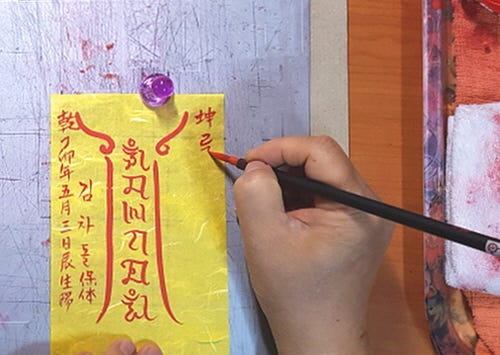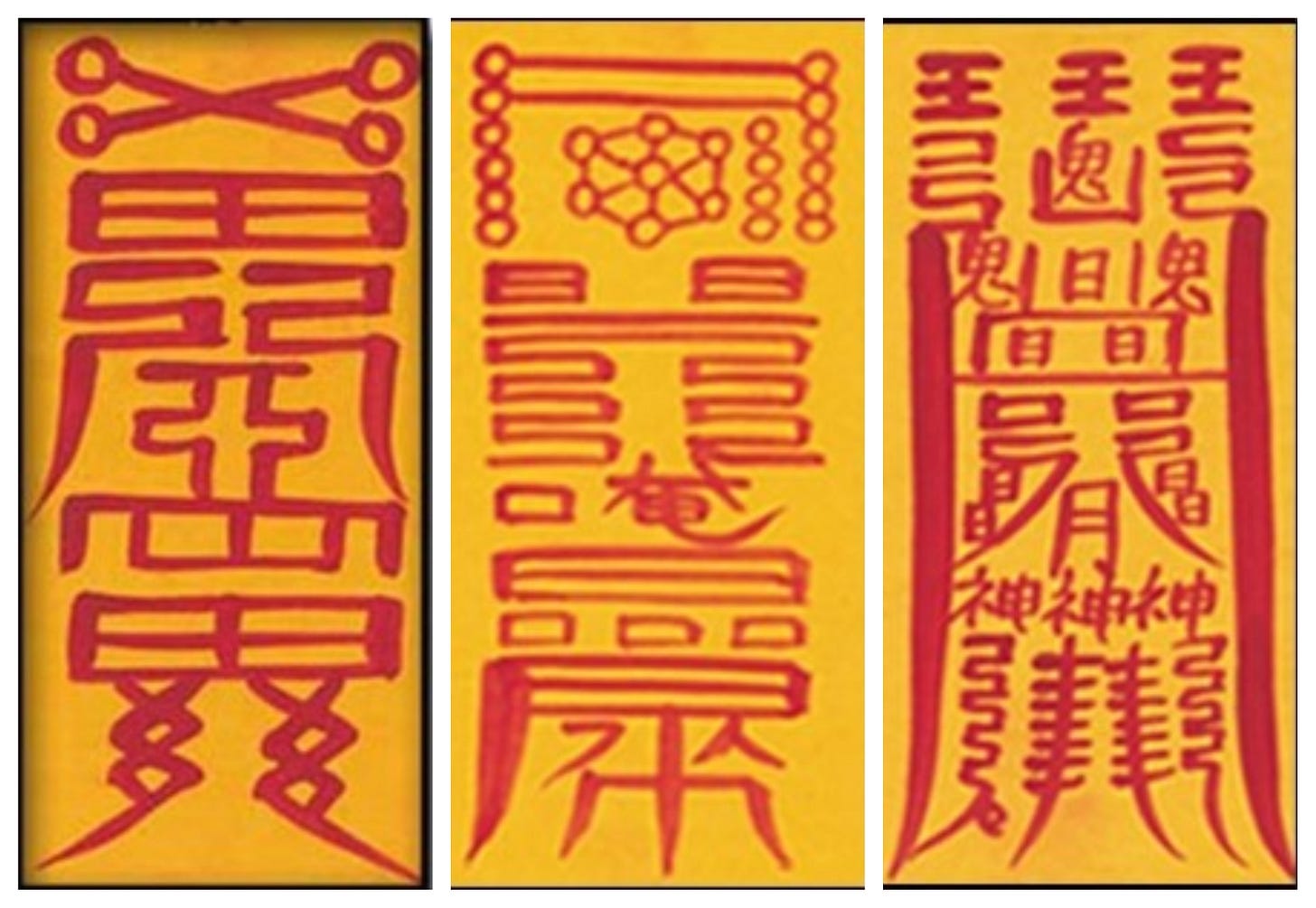Boo-Jeok (부적): the Art of Korean Voodoo
One of the most disturbing movies I’ve ever seen was Angel Heart released in 1987, my freshman year in college. I had immigrated to the US just 4 years prior, and was still learning the new language and getting acclimated to the new culture. For someone who grew up in a small town in southern Korea that had never seen or heard anything like it, can you imagine the shock from the raw voodoo practices shown in the movie? Plus, Lisa Bonet, a star from the popular sitcom at the time the Cosby Show, in a role like that? Phew… (you’re just gonna have to watch the movie.)
I remember I almost threw up watching it, but never wanting to miss any second of it. Although I didn’t fully understand what was happening in the movie, some of the imagery left indelible marks (or, should I say scars) in my memory—something I want to re-visit but don’t want to at the same time.
Those types of superstitions, ethnic folklore, localized religious beliefs, especially when combined with odd and sometimes grotesque real-life practices, give me the creeps. So, naturally I’m going to talk about one of them today.
Boo-jeok, 부적 (符籍), simply means a “document,” the way it’s written. But in Korean myth, it carries a completely different meaning. It can take various forms, but the most common way Koreans visualize it is something that looks like this.
Jumble of some weird looking Chinese and Korean writing with a crude image of a devil? This is gwi-shin-bool-chim boo (귀신불침부, 鬼神不侵符) that protects the possessor from the evil spirits.
Here are the basics of boo-jeok, the textbook version of it. The idea originates from the Chinese Taoist beliefs that dates back to the 6th century BC, although the practice of writing/drawing things on a specialized piece of paper has over the years spread to the Buddhist monks, practitioners of local beliefs, myths, superstitions, and fortune tellers. It is estimated that more than 20% of all Koreans have at one time possessed one of these, including my grandmother, my mom, and someone I used to date eons ago. (I know a high-and-holy ordained Christian minister who regularly carries this in his wallet.)
Traditional Korean paper hanji (한지) is dyed yellow from the fruits of a “Chinese Scholar tree,” or 회화나무 (hwae-hwa-namoo, sophora japonica), which supposedly wards off evil spirits, and things are written on it using red ink. Has to be red, not any other color. Yellow (actually, gold) represents the color of the (visible) light and enlightenment, which demons hate, and the red color has always been utilized as the evil repellant in Asian shamanisms.
People will either put these boo-jeok’s on the wall of their homes or fold them neatly and carry them in their wallets. Or, sometimes these will be burned and the ashes eaten(!!) “to maximize its effectiveness.” As you can see in the sample pictures throughout, it is made up of geometric shapes, Chinese and Korean (and very rarely Sanskrit) writing, nonsensical markings, and sometimes drawings of a figure. There is no such thing as a boo-jeok bible and the design is largely up to the whim of the creator.
The main purpose of possessing these paper talismans, amulets, or charms is twofold—either to bring in luck or to avoid ill fortunes. It is believed that the latter is used more frequently because of what it’s made of (refer to the tree above)—more powerful in fighting off the bad than attracting the good.
These yellow papers can be divided into subcategories that are too varied to discuss. But to name a few, there are the wish-come-true boo (소망성취부, 所望成就符), get-super-rich boo (초재부, 招財符), get-promoted-at-job boo (대초관직부, 大招官職符), and get-accepted-to-college boo (합격부, 合格符) in the “bring in luck” department.
In the “repel the bad” department, the most common one is the avoid-illness boo (병부, 病符). And these are further sub-classified into avoid-headaches, avoid-stomachaches, even a get-rid-of-constipation boo. Then there are the minimize-the-three-year-bad-luck boo (삼재예방부, 三災豫防符), don’t-let-your-spouse-cheat-on-you boo (부정, 不淨), and the above-shown gwi-shin-bool-chim boo, among countless others.

From time to time, you’ll see something like this in Korean dramas or TV shows. One of my personal favorites, Dae-Tal-Chool (대탈출, the Great Escape), had an episode in which the cast members had to escape from the house of a Korean shaman called moo-dang (무당). In it, you could see…
As you can see, this is a slice of Koreana that doesn’t need footnotes to Koreans but something that non-Asians will have some trouble understanding.
Effective or not, these have a definite place in the popular Korean culture. For example, the first boo-jeok I’ve shown above (the one with the drawing of a devil) sells for 25,000 won (about $20) for 50 copies(!) on the internet. And the seller claims that each copy is hand-written (or drawn).
Funny how the exact same looking boo-jeok (down to the tiniest detail) is being sold on one of the largest online retailers (sort of like ebay of Korea) for the bargain price of 8,900 won (about $7.50). Plus, this online retailer has “buy 1 and get 1 free” deal. And there are thousands of customer reviews!!
Notice the get-accepted-to-college boo above? Instead of 8,900 won price tag, the following get-accepted-to-college boo (to show you there is no one universal design for one thing) sells for a whopping 150,000 won (~$125) after a 50% discount.
Maybe this one is 17 times more effective than the one above…
So, there it is. The Korean practice of voodoo, of sorts, although it doesn’t quite involve making a doll and piercing it with pins and needles… Ahh but wait, there is an interesting story of such practices of witchcraft at the highest place in the royal court of Josun during the time of the most famous King in Korean history. (a tease for a much later posting…)













